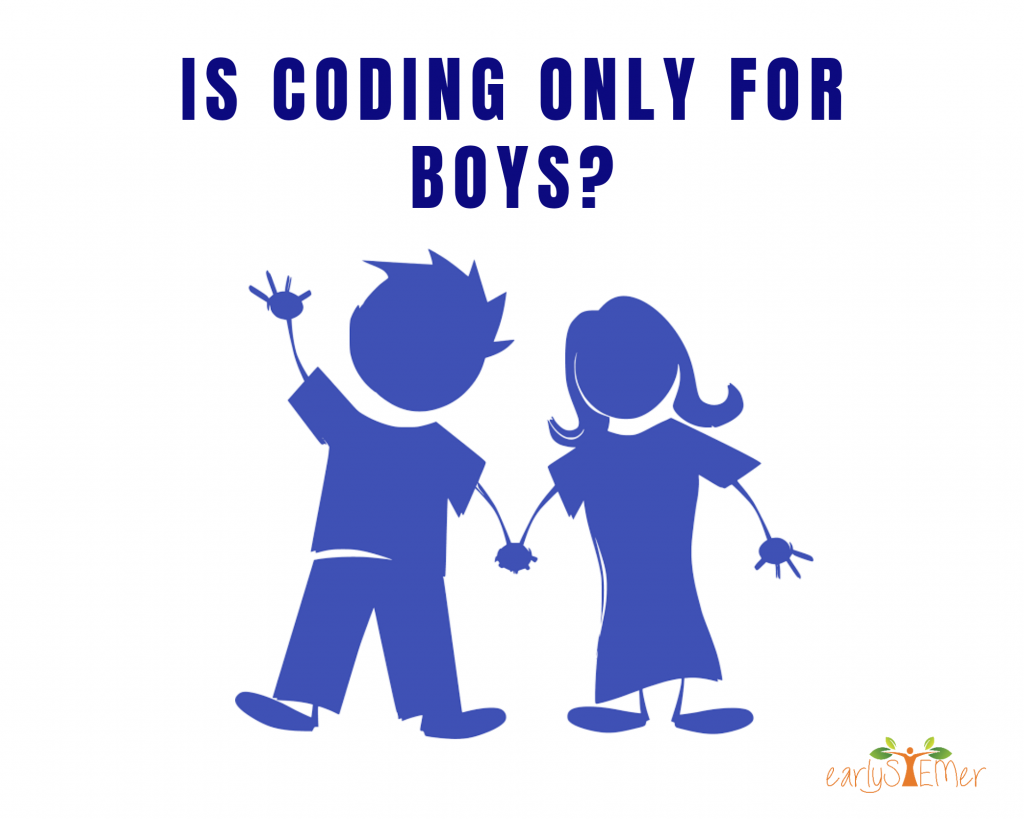
Introduction
There’s a general tendency to think that Coding is only for boys especially since the field is heavily male-dominated. In this US for example, women only hold about 27% of jobs in Computer and Mathematical Science, even though there are more women in the educated workforce.
However, is this because only boys are good at Coding? Our experience does not agree, neither does research.
Challenges
In our STEM Clubs and Camps, we have not seen any evidence of boys being better than girls at Coding and Robotics. In fact, research shows that the more women that are on a team/board, the higher the revenue of that company.
While these are true, we have faced two major challenges with girls in STEM: representation and confidence.
Representation: Our experience has shown that boys are generally more interested in and excited about STEM than girls. At least initially. This can be attributed to many factors including:
- STEM is seen as a field for geeks/nerds e.g. programmers are considered as people that lack social lives
- The lack of appeal of STEM tools to girls e.g. grey robots vs. pink robots
- Cultural biases e.g. girls should only learn to cook
Confidence: Boys are generally more verbal in learning environments than girls. As such, there is a tendency for girls to be less confident in approaching STEM (and problems in general) than boys are even though they are equally knowledgeable. Moreover, if you have consistently been told you cannot do something, you start to believe it. Society tells girls to focus on seemingly “easier” subjects like social sciences than more difficult (seemingly) subjects like Computer Science and Engineering.
What can we do?
Fixing this problem involves many parties including Government, Educators, and Parents.
While Computer Education is compulsory in many schools across various countries (including Nigeria), the curriculum needs to be updated to include Computer Science and reflect the advances in Technology. The goal is not to make all kids become computer programmers but to impact skills like problem-solving and critical thinking.
Educators need to create an inclusive learning environment for all students – boys and girls. STEM is a practical field and should be taught as such. Kids should get to work on hands-on projects which should be appealing to both genders. For example, while boys may prefer making games, girls may want to create stories. All forms of creativity should be encouraged.
Finally, as parents, it all boils down to EQUAL OPPORTUNITY. If you buy a blue robot for your male child, consider buying a pink robot for your female child (if she prefers the color pink). If you enrol your male child for a STEM Club, encourage your female child to also try it out. She may need a bit more nudging but nudge away.

As we encourage and provide opportunities for more girls to enter the STEM field, we are increasing our chances of developing more advanced and inclusive solutions.
Want to get your kids involved in Coding? Sign up for free on our earlySTEMer platform. You can also view our available virtual classes for instructor-led courses.
earlySTEMer is a platform where kids between the ages of 6 and 18 can learn practical technology skills such as Coding, Web design, and Artificial Intelligence. Kids can learn in one-on-one virtual sessions with a tutor, or through our instructor-led Virtual Group Classes, or learn at their own convenience through our Self-paced plans.
